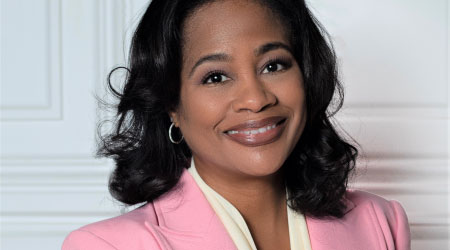Everyday Heroes
Limited resources can't stop innovation and drive
Excellence requires a touch of grace: pro athletes seem to defy the laws of physics, artists breathe into life the sublime, scientists are able to see beyond to what is possible.
It takes commitment to a vision, ingenious thinking and strategies, talent and doggedness.
You might not think facilities management is an apt arena for these kinds of attributes to flourish, but as the five winners of the 2011 FMXcellence award show, there is no limit to the feats of achievement possible in the field. Best of all, no Spandex required.
The winners are varied in geography and facility type: Western Michigan University in Kalamazoo, Mich.; PNC Financial Services Group in Scranton, Pa.; Hays Consolidated Independent School District in Buda, Texas; Charlotte-Mecklenburg Schools in Charlotte, N.C.; and the Department of Central Services, State of Oklahoma government. And yet certain themes bind them. A vision of facilities management as a strategic quantifiable endeavor. A resolution that being short on budget doesn't prevent largesse in innovation. And decision making driven by sustainability, not as a buzzword or as a PR move, but because it just plain makes sense.
Though the exact parameters of each organization's projects might not be directly exportable to all facility management departments, their strategies for leadership and problem solving certainly are.
Green Means Go
Being green has, begrudgingly by some, become de rigeur. But by moving beyond a few green touches here and there to adopt a systematic approach, sustainability can rise as a way to showcase true leadership in facilities management and garner benefits for the larger organization.
Take what occurred in the State of Oklahoma government's Department of Central Services (DCS), office of facilities management. In response to a constrained budget and rising energy costs, several years ago the facility management department instituted a sustainability plan. This plan was meant to be a department initiative but was so well-received it was rolled out to the entire agency. It touches everything they do.
"The sustainability plan is anything from how we purchase motors to how we purchase chemicals," says Craig Cherry, facilities operations manager, DCS. "It is the roadmap for everything we do now." And what they're finding is that decisions driven by the sustainability plan end up being the right thing to do long-term for the good of the organization.
As an example he points to a boiler replacement. The 55-year-old boilers were still hanging on, but were inefficient and were getting harder to certify. Once it became crucial to replace the boilers, they decided to go with highly efficient condensing boilers. Though they had to pay more upfront than for a direct replacement, operation and gas usage are much better now than they've ever been. "We looked at the long-term effect, and we do that on everything now," Cherry says. "It's not just what's the best price. We're looking at lifetime usage and what's the best benefit we're going to get."
Making sustainability and energy efficiency the frames in which decisions are considered has yielded more immediate benefits. From fiscal year 2008, when the office of facilities management established an energy unit, through fiscal year 2010, electricity savings alone equaled over 8 million kWh, an 18 percent reduction in the more than 2 million square foot portfolio of state-owned buildings.
At Western Michigan University, Peter Strazdas, associate vice president for facilities management, says it was less a point of policy and more of a revolution that brought sustainability to the fore on campus. And the facilities department decided to be leaders in the change.
"We elected to participate with the students and the faculty in this cultural transformation to a more sustainable campus," Strazdas says. "We found a common vision between our facilities' needs to be more sustainable and some of the students' cultural needs to be more sustainable on campus."
What really turned the tide was the renovation of the College of Health and Human Services in 2008. With a new university president who wanted to focus more on LEED certification, according to Strazdas, the facility became the first LEED-EBOM Gold building in higher education in the world. The focus on existing buildings had only begun in earnest in 2008, so there was a bit of education for the staff. "We had to transform a lot of operating practices, processes and materials and education for the staff in that building," Strazdas says. "The transformation was so successful in that one building that it cascaded across the other 150 buildings on campus."
Of course, not every building on Western Michigan's campus is LEED-EBOM certified, but it ramped up changes in the way the 8 million square foot campus operates. The move to sustainability began in the late '90s, with the construction of the Parkview campus, and collective efforts since then have yielded an 18 percent decrease in total campus energy consumption, even though the building square footage increased by 17 percent.
Related Topics:













